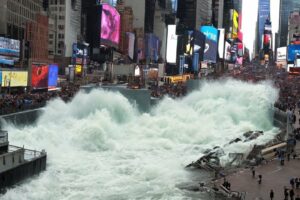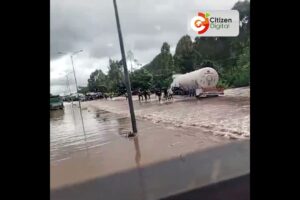
Draining the Pacific reveals the deadly forces behind Earth’s most destructive natural disasters, and a catastrophic threat off America’s coast.
➡ Subscribe: http://bit.ly/NatGeoSubscribe
➡ Get more Nat Geo Full Episodes: https://youtube.com/playlist?list=PLivjPDlt6ApSiD2mk9Ngp-5dZ9CDDn72O
➡ Get more Nat Geo Wild Full Episodes: https://youtu.be/qAG2SkTPltw
And check out more National Geographic series and specials here:
➡ Disney Plus: https://www.disneyplus.com
➡ Hulu: https://www.hulu.com/welcome
➡ NGTV app: https://www.nationalgeographic.com/tv/
➡ ABC app: https://abc.com/
#FullEpisode #DrainTheOceans #NationalGeographic
Get More National Geographic:
Official Site: http://bit.ly/NatGeoOfficialSite
Facebook: http://bit.ly/FBNatGeo
Twitter: http://bit.ly/NatGeoTwitter
Instagram: http://bit.ly/NatGeoInsta
TikTok: http://www.tiktok.com/@natgeo
Tenor: http://on.natgeo.com/31b3Koc
About National Geographic:
National Geographic is the world’s premium destination for science, exploration, and adventure. Through their world-class scientists, photographers, journalists, and filmmakers, Nat Geo gets you closer to the stories that matter and past the edge of what’s possible.
Deadly Pacific (Full Episode) | Drain the Oceans
National Geographic
https://www.youtube.com/natgeo
source







Can you imagin if a huge Tsunami was to hit the town of Kaikura at 3 in the morning!! Absolute chaos!!
When you drain the Pacific that causes flooding in the Atlantic
Thank you and God bless you for rescuing this sweet soul
.he's wonderful. His face could melt tge ❤️ heart of an iceberg
The deepest humans have ever drilled is 8 miles in Russia. Molten magnets lose their magnetism so there can"t be a molten core! The truth is, THEY DON'T KNOW! Or they're not telling us?
Heres a solution.
Move.
This is the best documentary series I've ever watched
@14:35 did he just GoldFinger ?
would be great if they added some digital graphics showing the cities with buildings and other infrastructure to give more perspective of the difference before and after the oceans were drained.
Maybe the only crappy thing about living in Salem and the mid Willamette Valley.
yo mama like this video ?
Five minutes of information in 47 minutes flat.
Cascadia is next to a Pacific subduction zone, so there will be Earthquakes, tsunamis, and conceivably a Big One. Or not.
They've all been very rare, so Mount St. Helen's eruption was a big surprise. So things may be getting more active. Or not.
The dead trees along the copolis river are NOT petrified, Petrified means turned to stone so that scientist would not have been able to cut it with a chainsaw
The subduction zone along the Pacific Northwest is NOT inactive it is constantly in motion, it's when it stops moving that an earthquake can happen
How do the people of Cascada even begin to prepare for something like this? The only real answer is to take to the air but how is this even possible? Personal emergency hot air or helium balloons perhaps? How long would it take to prepare and make ready something big enough to carry maybe four people? I guarantee you it'd be more than 20 minutes! Maybe, MAYBE If the preparation began automatically, AND you practiced enough You might be able to take flight before the 20 minute tsunami deadline came. And that's if it's 20 minutes.
Even if you could get to the ocean, which would be the only other method by which you might survive, you would have to get quite a ways out to be able to manage the swell and not just have a title wave swamp your boat out there.
You don't know how high the water will reach So climbing the hill behind your house may not be sufficient. There will be absolute traffic deadlock on any inroads but it's not really a matter of escaping the coast as it is gaining elevation quickly…
Perhaps one of those orange emergency ship escape pods might do if it was just water but I guarantee you it will crush like a soda can if it gets caught in debris – which you know there will be.
Perhaps an underground, completely watertight, self-oxygenating escape room would be an order. But how long could you survive under there? And what if the water receives but leaves 200 ft of rock, soil, and debris above you? Even if it's just 10 ft you would die from suffocation eventually.
How melodramatic the narrator's script is!
Just an FYI… The First Nations people weren't the first…
Could do without Seattle and Portland……..Vancouver, BC would be ok except it’s full of Canadians……contrary to perceptions – they’re not very friendly
Thanks for these videos! My son in law is an "earthquake specialist " (or whatever it's called) He was part of the UN team that went to Haiti after the devastating quake there to rebuild /design quake resistant buildings. I think that's why this video is especially interesting to me. I hope NG continues producing these excellent programs, and doesn't go downhill like the History Channel.
This is so cool
I wonder, if you drained the oceans, how much of the sea floor would be baron, and how much would be covered in dead sea life. How much life is in the ocean, by volume, compared to surface area?
as an sea enthusiast this drain the ocean series is AWESOME
Dutchsinse predicts earthquakes. Because USGS refuses to admit his techniques are legitimate they are going to cost lives again during the next big one.
I used to canoe the Copalis River in the late 70's. I too wondered about the "snag's". Many had Eagle nest at the tops. I now have much more respect for what happened.
Seriously, does everything need to be narrated like an action movie? Even something that effectively boils down to science communication?
Here I stand, no longer flabbergasted at the lack of scientific literacy in wide parts of the US.
A lot of great information, but the forced hysterically dramatic narration and focus of possible disasters detracts from the science. Stop dumbing-down to pander to ignorance.
Mother Nature needs to flush the toilet in the Pacific Northwest. End of story.
Living in Seattle, we've had go-bags ready for The Big One since we got here. Small price to pay for peace of mind and the ability to get up and leave in the event of volcano, tsunami, tornado, earthquake or whatever else.
-And I thought Hooters was a seduction zone…
Jingt
I went to college in Long Beach, California. Traveling up and down the coast, in places like Laguna Beach, and north on 101 to San Francisco, the sight of homes literally perched on stilts on steep hillsides amazed me……. how little it would take to collapse their seaward support is incredible enough. Earthquakes can be really eerie. A few times there was no feeling of motion, but a sense that some energy just moved through the building. When a company I worked for in Baltimore opened a San Francisco office in a skyscraper, I was little interested in transferring.
You'd think the Pacific's immensity might absorb or spend energy but the moon has a big say in that as well.
You are a bit too———————-melodramatic—————————and you might want to consider————————————-that Noah's Flood————an CATASTROPHIC plate tectonics———–explain a lot————————–Thank You for a fine——presentation!
Too Disney, spectaclized what-if Bs.. i miss the old nat geo
Our volcanos are active. What is this dormant thing? I've climbed Mt St Helens (Loowit) and the dome building from the rim was awe inspiring. If you climb Mt Hood (WyEast) you will smell sulphur.
Anyone whos visited Seattle/Portland/Vancouver knows a big wave is needed
They neglected to mention that the Oregon & Washington coastline will subside many feet during a subduction zone earthquake. That will magnify the impact of the tsunami that follows.
Those trees were killed because the ground sank below sea level.
What about the underwater UFO base off California?
22:15 Dude JUST SAID "An enormous tide, but very quickly"
National Geographic: Proceeds to show a giant impact wave
do producers do even know the difference "tide" and "wave"?
It's happening now as we speak!
Smaller settlements on the Washington and Oregon coasts would be quickly destroyed like those on the northeast coast of Japan. Portland, Seattle, and Vancouver are not exposed directly to the Pacific ocean. Portland has the Columbia river, Seattle and Vancouver have the Strait of Juan DeFuca and Sound waters as buffers to Pacific tsunamis, slowing them and allowing more time for evacuations. There would be flooding, but not the 100 foot waves smashing through Seattle as the documentaries love to depict.
It’s still not as dangerous as my ex-wife😮